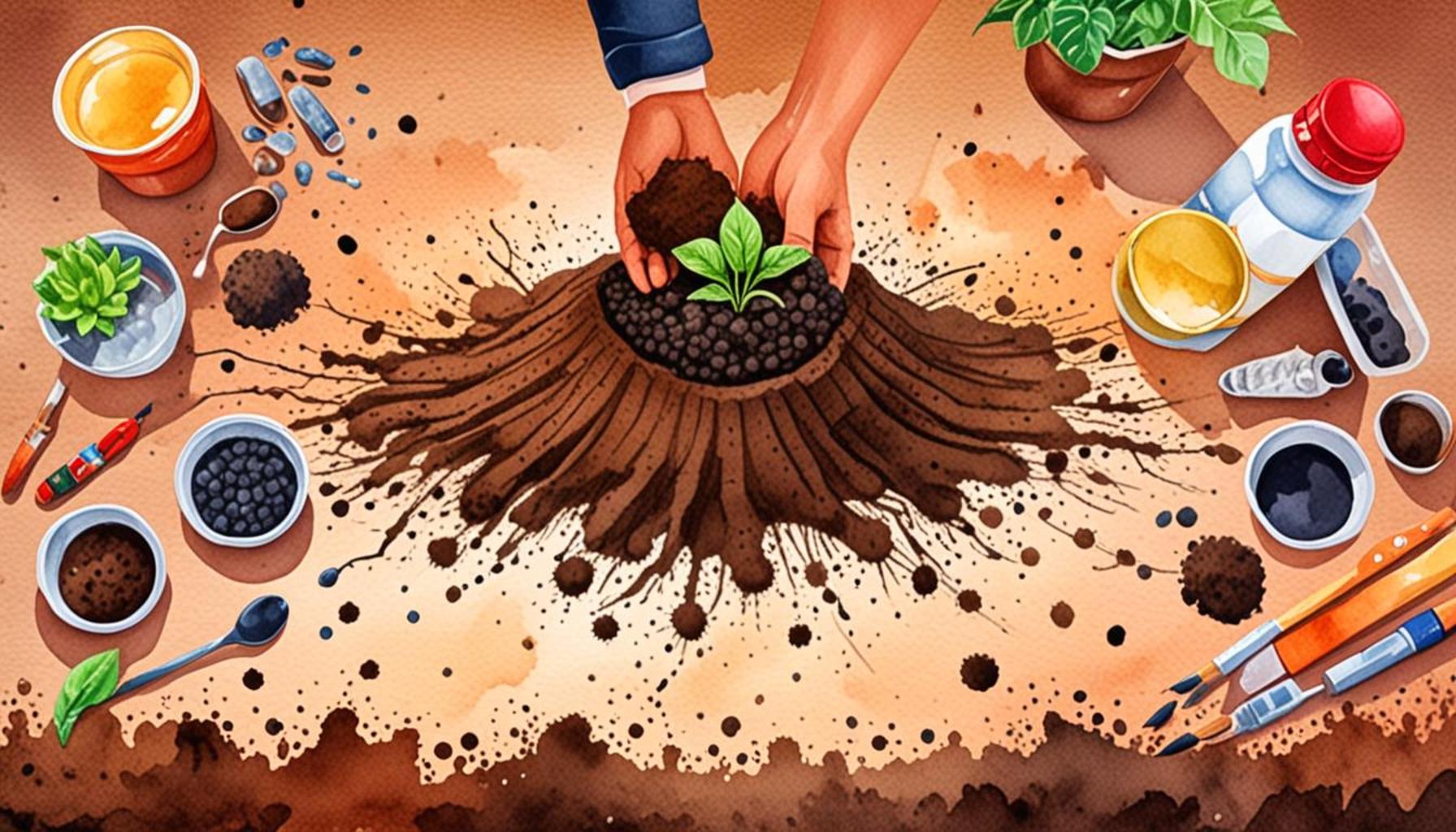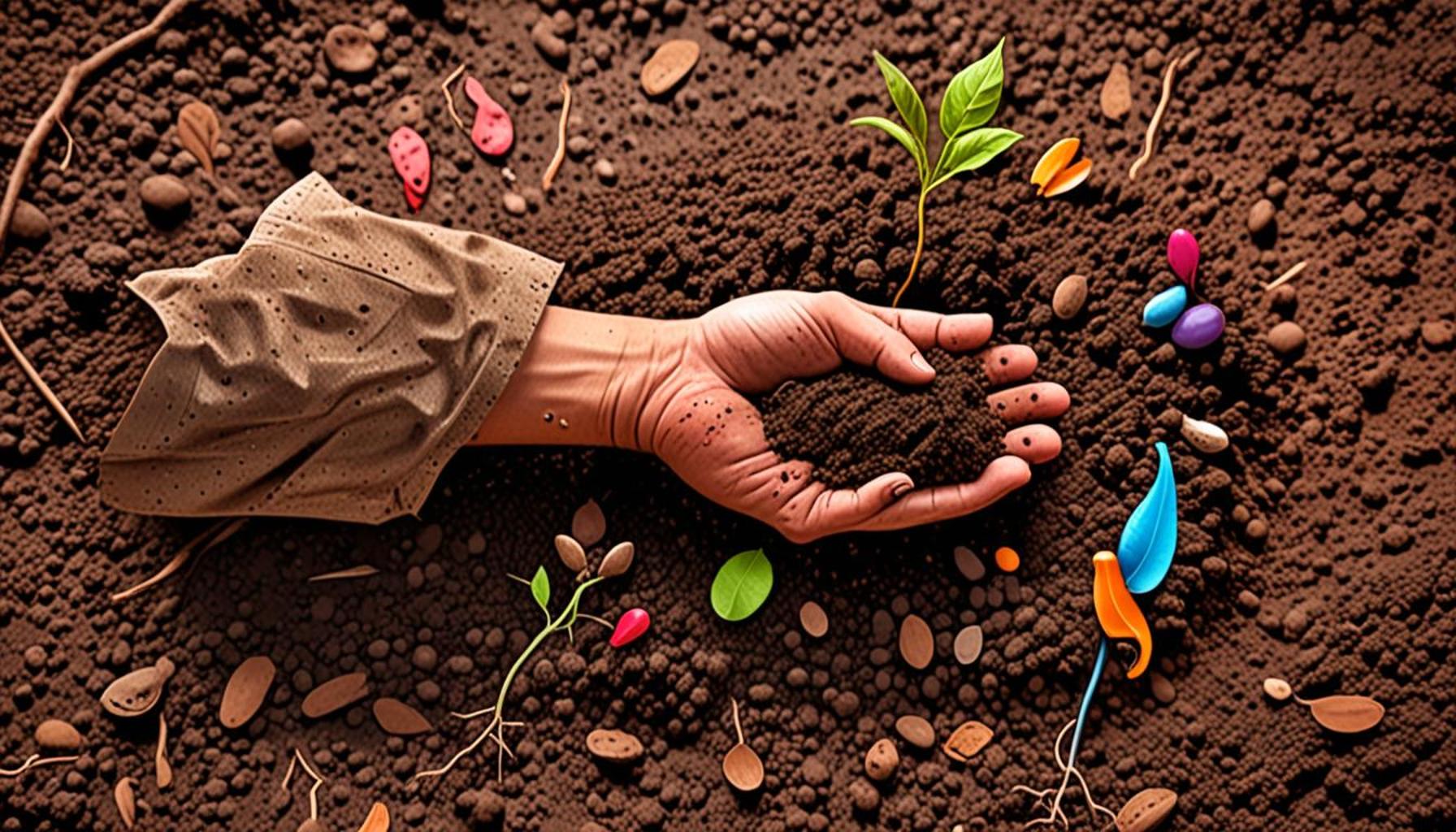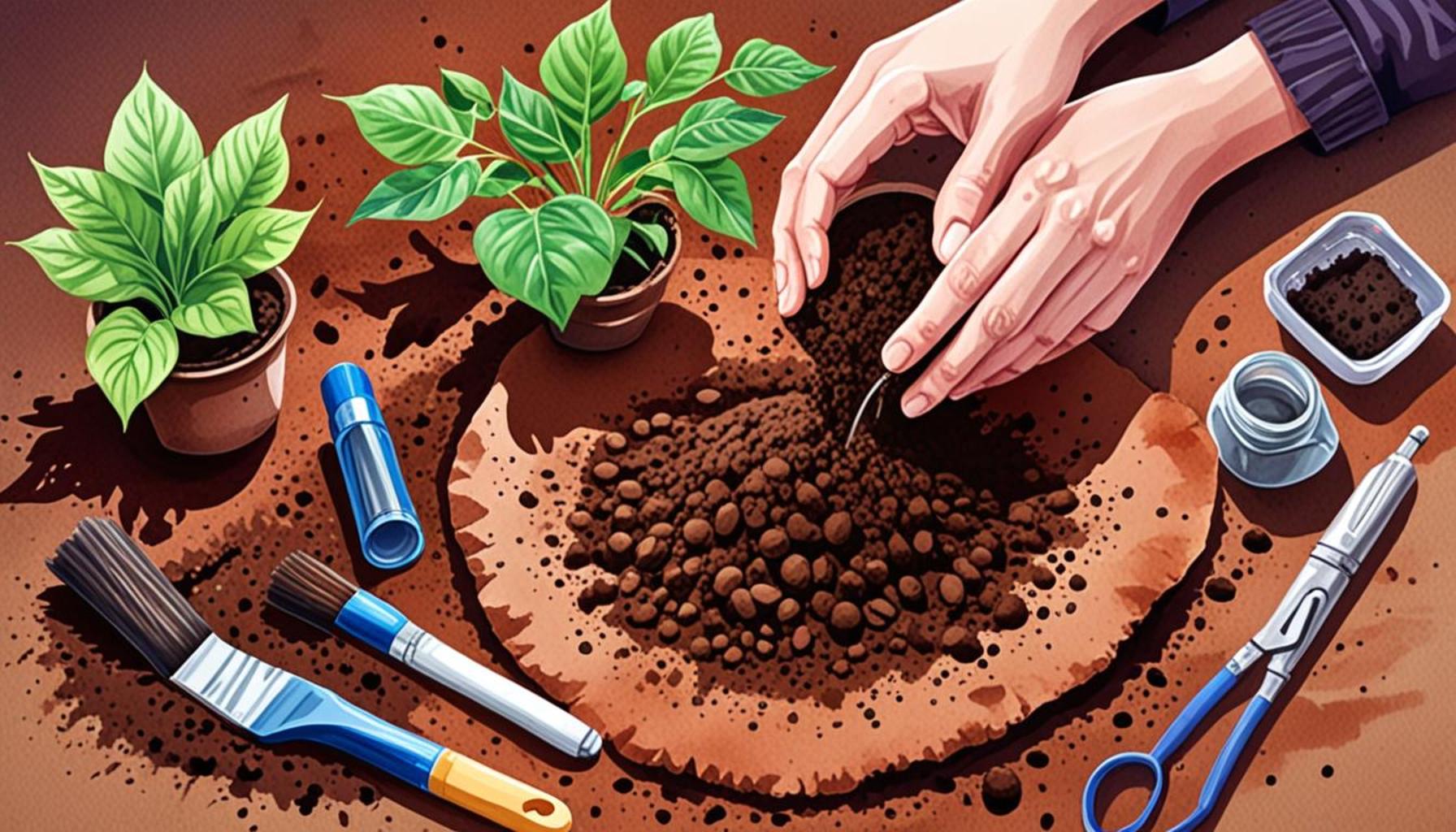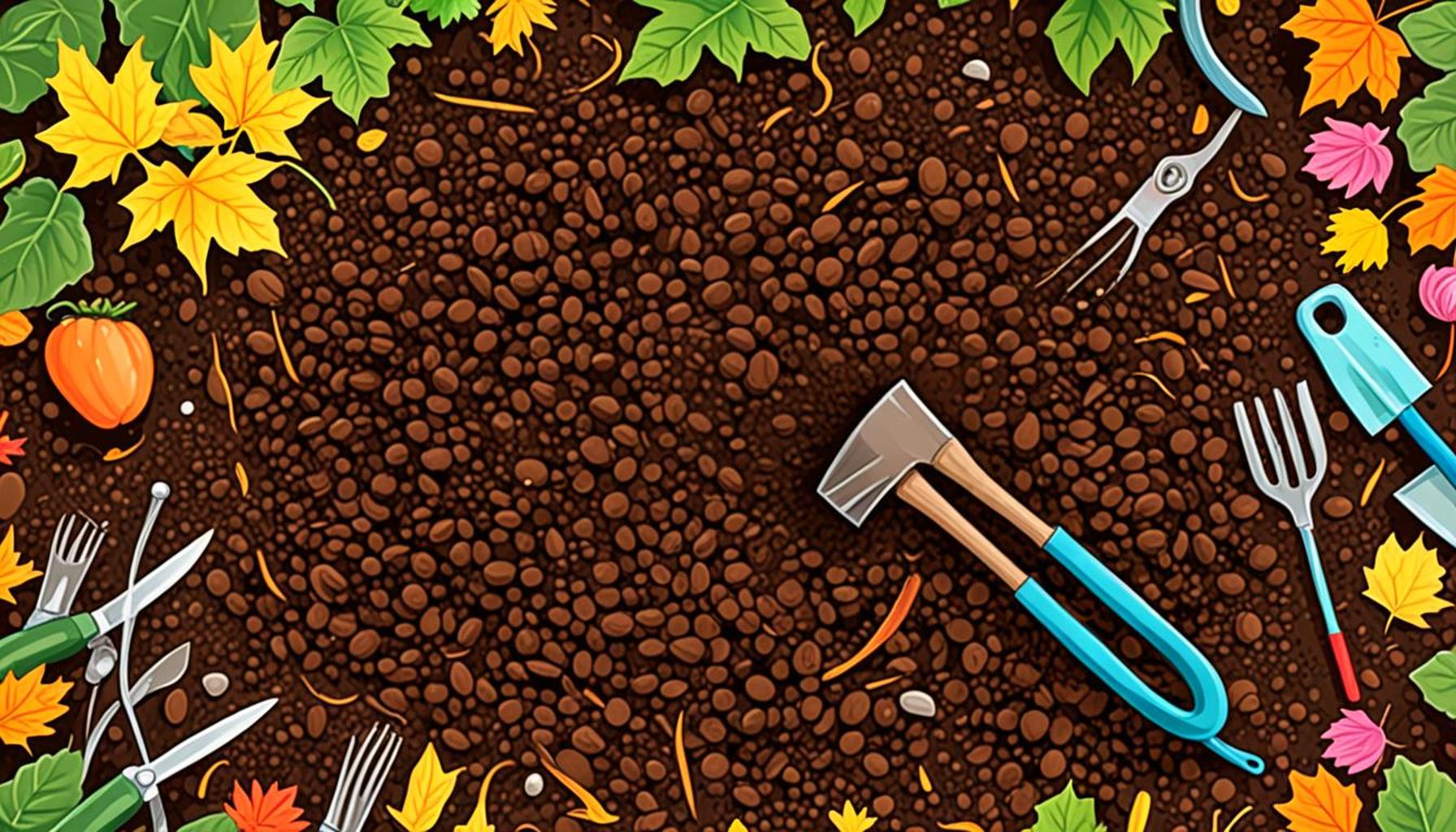Soil Mixtures: What Beginners Need to Know to Create a Healthy Environment

The Foundation of a Flourishing Garden
Creating a healthy environment for your garden starts with understanding the essential building blocks of soil. Not all soil is created equal, and the right soil mixtures can make a significant difference in plant growth and sustainability. Whether you are a seasoned gardener or just starting out, knowing how to mix soil effectively is crucial.
One of the first things to consider is the texture of the soil. Soil texture has a profound impact on factors such as water retention, drainage, and aeration. Sandy soil, for example, drains quickly but may not retain nutrients effectively. On the other hand, clay soils can hold onto nutrients but often become heavy and compacted, leading to poor aeration for root systems. A balanced mix containing various textures can enhance these qualities, promoting a better environment for plant roots to thrive.
When we discuss components, common mixtures typically consist of sand, silt, clay, and organic matter. The combination of these elements can be tailored to fit specific plants. For instance, adding more compost or well-rotted manure can introduce beneficial microorganisms and increase nutrient content, which is particularly advantageous for vegetable gardens. If you are growing succulents or cacti, a coarser mix with more sand is essential to ensure adequate drainage.
The Role of pH Balance
Another critical aspect to consider is the pH balance of your soil. A neutral pH of around 6.0 to 7.0 is generally considered optimal as it allows for the best availability of essential nutrients. Soil that is too acidic or alkaline can hinder nutrient uptake, leading to deficiencies. Conducting a simple soil test can inform you of your existing pH levels, allowing you to make the necessary amendments with lime to raise pH or sulfur to lower it.
For novices in gardening, the variety of soil mixture options can seem overwhelming. However, understanding a few fundamental principles can simplify the process. Be mindful of drainage—proper drainage is essential for healthy root development and mitigates the risk of root rot. Consider incorporating organic materials like leaf mold or compost to enhance the nutrient content of your soil. Finally, ensure compatibility: group plants with similar soil and water requirements to ensure optimal growing conditions. For instance, it’s wise to plant water-loving species like astilbes alongside moisture-retaining soils compared to drier conditions suited for lavender.
As you dive deeper into the intricacies of soil mixtures, remember that experimentation leads to discovery. By tailoring your mixtures to meet specific plant and environmental needs, you will cultivate a thriving garden that flourishes with life. Each garden is unique, and embracing this individuality allows for continuous learning and adaptation. Stay tuned to explore the vital elements that contribute to a successful gardening journey, and embark on an adventure that can transform your green space into a personal oasis.
DIVE DEEPER: Click here to learn how to choose the perfect indoor plants
Understanding Soil Components and Their Importance
To create a thriving garden, beginners must first grasp the significance of various soil components that contribute to a well-balanced mixture. Comprehending what each element brings to the table not only enhances your gardening skills but also paves the way for cultivating robust plants. Here are the primary components that make up effective soil mixtures:
- Sand: Coarse grains that improve drainage and prevent compaction.
- Silt: Finer particles that retain moisture and nutrients, aiding in the overall fertility of the soil.
- Clay: Dense particles that hold onto moisture and nutrients but require careful management to avoid waterlogging.
- Organic Matter: Decomposed plant and animal materials, such as compost and well-rotted manure, essential for enriching soil with nutrients and improving structure.
Combining these elements allows for tailored soil mixtures that cater to the specific requirements of your plants. For instance, if you’re aiming to grow leafy greens, a loamy mixture—containing an equal balance of sand, silt, and clay along with ample organic matter—will provide the necessary conditions for health and productivity. Conversely, for drought-resistant plants such as succulents, a greater proportion of sand mixed with porous materials like perlite or pumice is vital to ensure swift drainage.
The Importance of Soil Structure
Another crucial factor to grasp is soil structure. The arrangement of soil particles affects how well air and water move through the soil, which is critical for root health. A well-structured soil has aggregates that create space for air pockets, allowing roots to breathe. Poor structure, characterized by compacted or overly sandy soil, can lead to anaerobic conditions where root systems struggle to obtain necessary oxygen, ultimately hindering growth.
For beginners, understanding the concept of soil structure also involves recognizing how to amend your mixtures for optimal performance. Consider integrating materials that promote airflow and water retention, such as:
- Pearlite: A lightweight material that enhances aeration and drainage.
- Vermiculite: A mineral that retains moisture while providing aeration.
- Coir: A biodegradable substitute for peat moss that retains moisture without compacting.
Incorporating these materials not only improves soil structure but also fosters a thriving ecosystem in your garden. Beginners should take note of the particular needs of their plants and adapt soil mixtures accordingly, embracing the practice of soil amendment to ensure a healthy foundation for growth.
As you venture further into the world of gardening, remember that every soil mixture tells a story about the conditions that support your plants. By learning how to manipulate these components, you can build a mixture that fosters an environment brimming with vitality, ready to support your gardening passions.
Understanding the Components of Soil Mixtures
To create a robust foundation for plants, beginners must first grasp the essential components that make up healthy soil mixtures. Soil is not just dirt; it is a complex ecosystem teeming with microorganisms, minerals, and organic matter. Each of these elements plays an integral role in plant health and productivity.One of the primary ingredients in any soil mixture is potting soil. This versatile medium typically combines peat moss, compost, and perlite or vermiculite, providing excellent drainage while retaining moisture. Peat moss helps to aerate the soil and enriches it with nutrients, making it ideal for most plants. On the other hand, compost introduces beneficial microbes and enhances nutrient availability.Additionally, amendments like aged manure or bark chips can improve soil structure and fertility over time. For those venturing into container gardening or raised beds, incorporating these amendments is vital as they rejuvenate depleted soil and offer a balanced nutrient profile.Another crucial factor in soil mixture preparation is understanding the soil’s pH level. Most plants thrive in slightly acidic to neutral pH levels (6.0 to 7.0). By testing soil pH, beginners can adjust the mixture by adding materials like lime to reduce acidity or elemental sulfur to increase it, ensuring a hospitable environment for root development.
The Importance of Drainage
Effective drainage is another cornerstone of a successful soil mixture. Without proper drainage, plants may suffer from root rot due to excess water retention. Mixing materials such as perlite or sand into potting soil enhances aeration, providing roots with the oxygen they need to thrive. In summary, understanding the components of soil mixtures is crucial for anyone aiming to create a healthy growing environment. By mastering the balance of ingredients and ensuring proper drainage, beginners can cultivate vibrant plants that flourish year-round.
DISCOVER MORE: Click here to learn about early pest identification
Choosing the Right Soil Mixture for Your Plants
Once you have a foundational understanding of soil components and their structure, the next step is selecting the appropriate soil mixture for your plants. Not all plants thrive in the same conditions, and understanding the specific needs of your chosen species is crucial in creating a healthy environment for growth. Each plant species has different requirements for moisture retention, aeration, and nutrient availability, making it essential for beginners to research their specific needs before crafting a soil mixture.
To help narrow down your options, consider the following categories of plants and their ideal soil mixtures:
- Flowering Plants: Annuals and perennials typically prefer a well-draining soil with a balance of organic matter. A mix of 40% topsoil, 30% compost, and 30% perlite can provide the necessary nutrients while maintaining good drainage.
- Vegetable Gardens: Most vegetables thrive in rich, loamy soil that supports root development. A recommended mixture for vegetable beds would be 50% garden soil, 30% compost, and 20% peat moss to retain moisture without leading to excessive compaction.
- Succulents and Cacti: These drought-resistant species require a soil mix that drains quickly. A combination of 50% coarse sand or grit, 30% potting soil, and 20% perlite helps mimic their native arid environments.
- Ornamental Grasses: Typically tolerant of various soil types, ornamental grasses flourish in well-draining, nutrient-rich soil. An ideal mixture would consist of 40% loamy soil, 30% sand, and 30% organic matter to support healthy growth.
Testing and Adjusting Your Soil Mixture
With a grasp of suitable mixtures, it’s important to take the additional step of testing your soil to ensure it meets the needs of your plants. Soil testing kits, readily available at garden centers or online, provide insight into nutrient levels and pH balances that can significantly impact plant health. A balanced pH, usually between 6.0 and 7.0 for most plants, encourages optimal nutrient uptake.
Once you have your soil tested, you might need to make adjustments. If your soil is too acidic, you can raise the pH by incorporating lime. Conversely, if it’s too alkaline, adding sulfur or compost can help lower the pH. Additionally, consider the availability of nutrients: if your soil test reveals deficiencies in essential elements like nitrogen, phosphorus, or potassium, supplementing with organic fertilizers or slow-release nutrients can create a more balanced environment.
Organic vs. Synthetic Soil Amendments
Another aspect worth exploring is the choice between organic and synthetic soil amendments. Organic amendments, such as compost, seaweed extracts, or bone meal, enrich the soil while improving its structure and microbial health. They support a thriving ecosystem in your garden, ultimately benefiting your plants over the long term. On the other hand, synthetic fertilizers might give quicker results but can lead to nutrient leaching and complicate the soil’s biological health if used excessively.
Making informed choices about your soil mixture will facilitate your journey towards a flourishing, productive garden. Through careful consideration, testing, and amending your soil, you’ll set the stage for vibrant plant life, ensuring your endeavors yield satisfying results.
DISCOVER MORE: Click here for insights on homemade traps
Conclusion
Creating a healthy environment for your plants starts with the right soil mixture. As a beginner, understanding the specific needs of your plants is paramount to crafting a soil blend that promotes growth, vitality, and resilience. From flowering plants to succulent gardens, each category has unique requirements that can significantly impact your gardening success.
Remember, a successful gardening journey involves not only selecting the appropriate mix but also testing and adjusting your soil to ensure it meets the desired nutrient levels and pH balance. Utilizing soil testing kits can empower you to make informed amendments, ultimately enhancing the health and productivity of your plants.
Considering the choice between organic and synthetic amendments is equally important. While organic options foster a beneficial ecosystem and long-term soil health, synthetic solutions might provide quicker fixes but pose risks if overused. Striking the right balance between these two approaches can enhance your soil’s quality, ensuring it supports a thriving garden.
In conclusion, embarking on your gardening adventure requires curiosity, research, and a willingness to experiment. By following the principles outlined in this article and continually educating yourself on soil mixtures, you’ll establish a vibrant environment that not only sustains your plants but also fosters your passion for gardening. Dive deeper into the world of soil, and allow your green thumb to flourish as you witness the fruits of your labor come to life.


